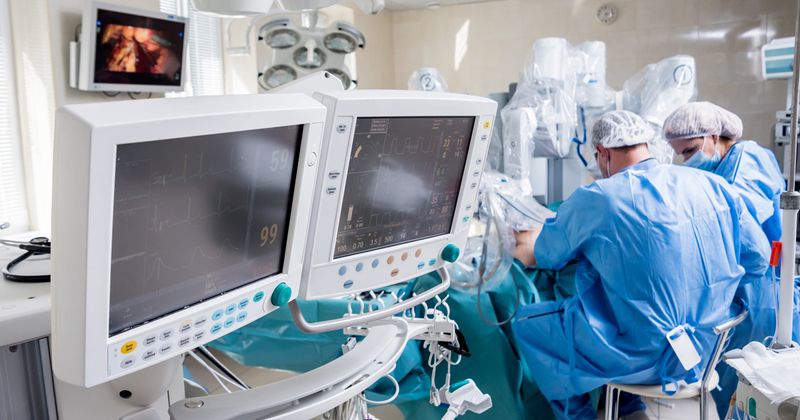ACL reconstruction with novel technique linked with 92% return to sport in some teenagers
CHICAGO — Patient-reported outcomes were favorable at 2 years for ACL reconstruction done with a modified Lemaire lateral extra-articular tenodesis in children and teenagers with risk factors for failed ACL reconstruction.
Frank A. Cordasco, MD, Daniel W. Green, MD, and colleagues at Hospital for Special Surgery (HSS) studied 61 consecutive patients, who ranged in age from 11 to 19 years, to evaluate the safety and efficacy at 2-year follow-up of performing these added procedures concurrently with ACL reconstruction.

Cordasco presented the results at the American Academy of Orthopaedic Surgeons Annual Meeting.
“It is one of the first studies that shows in young kids who are growing, with open growth plates, it can be done safely,” Green told Healio.
Cordasco said in a press release from HSS, “Not only does this technique not disturb children’s growth plates or cause postoperative stiffness, but we also found that this demonstrates a remarkably low retear rate in this high-risk group.”
For patients with risk factors
Among those studied, 59 patients played organized sports, including soccer, basketball, football and lacrosse.


Simultaneous lateral extra-articular tenodesis (LET) was indicated for patients undergoing ACL reconstruction who had one or more risk factors for a failed reconstruction, such as playing high-risk competitive sports that involve cutting, pivoting and jumping; having hyperlaxity; a grade 3 pivot shift; an anterior translation with more than 7-mm side-to-side difference; a large lateral tibial slope or recurvatum.
The surgeons used a full-thickness quadriceps tendon autograft in 42 skeletally immature patients and a bone-patellar tendon-bone autograft in 19 skeletally mature patients.
The surgeons employed all-epiphyseal techniques in seven patients and complete transphyseal techniques in 54 patients, based on age.
Return to sport rate of 92%
Results showed a mean single assessment numeric evaluation score of 95% (100% represents normal) at the 2-year follow-up, at which time the mean pediatric IKDC score was 91 (100 means no limitations on daily and sports activities).
The median HSS functional activity brief scale score at 2 years was 27 of a possible score of 30.
According to the abstract, the return to sport rate was 91.8%. One patient underwent revision ACL surgery and three patients had subsequent contralateral ACL reconstructions.
“We used [the LET] technique before and we’re excited about it, but we’re now sharing that the actual return to sport is high [and] patient-reported outcomes were respectable,” Green said.
A study of 324 athletes that Green, Cordasco and colleagues published in American Journal of Sports Medicine in 2019 identified a high failure rate of about 20% for ACL reconstruction with hamstring autograft in 8th, 9th and 10th graders — the study’s “middle cohort” and the high-risk group in the latest study. By comparison, in the American Journal of Sports Medicine study, there was a 6% failure rate for ACL reconstruction in a younger cohort of patients in 7th grade or younger, as well as in a cohort of patients in 10th grade and older.
For that middle cohort, “the risk of re-injury has been too high, leading to devastating consequences for a young athlete” Cordasco said in the press release.
He told Healio, “The middle group, which are these young people, kind of in the bubble between middle school and high school, had a higher failure rate with the hamstring graft and we changed our approach after that cohort and started using the quadriceps graft.”
Modified Lemaire LET
Despite this change in the graft used, investigators found young patients with non-modifiable risk factors benefited from a modified Lemaire LET done simultaneously with arthroscopic ACL reconstruction.
Green and Cordasco said they modified the Lemaire LET technique described in the 1970s so it could be used in adolescents and, although a few other centers are starting to use the LET technique, HSS is one of the first centers to use it with ACL reconstruction for this young age group.
“These are not new operations,” Cordasco told Healio. “But, in this particular group of young people, this is new. It hasn’t been done before.”
He continued, “We view the LET as kind of an insurance policy to prevent reinjury because we are diminishing the potential for the athlete to tear again and there are no untoward effects as it relates to performance, the ability to get back to sport and perform at a higher level.”
Green said the LET adds about 20 minutes to an ACL reconstruction and the postoperative rehabilitation is similar to what is done for a usual ACL reconstruction.
“In the right athlete, the LET is a great adjuvant treatment at the time of surgery. It diminishes the recurrence rates significantly from 20% to 1.7%, meaning the revision rate, and it doesn’t change the return to sport except in the positive, perhaps shortening it a bit,” Cordasco said.
References:
Cordasco FA, et al. Am J Sports Med. 2019;doi:10.1177/0363546518819217.
Schlichte LM, et al. Arthrosc Tech. 2019;doi:10.1016/j.eats.2019.09.010.


